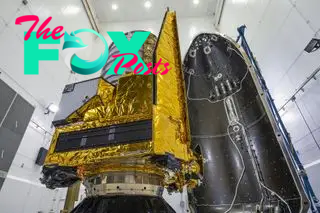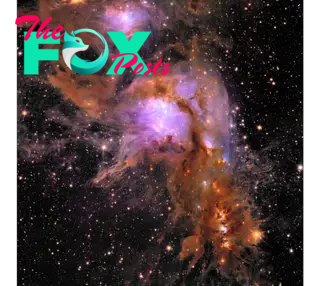Science
Euclid space telescope: ESA's groundbreaking mission to study dark matter and dark energy
Update: This article was updated on May 23, 2024, with new information and images about Euclid's first science observations.
The European Space Agency's (ESA) Euclid space telescope successfully blasted off from Cape Canaveral, Florida, on July 1, 2023 and shared its first scientific observations on May 23, 2024. The groundbreaking space telescope will hunt for clues about two of the universe's greatest mysteries: dark matter and dark energy.
Despite making up an estimated 95% of the universe, dark matter and dark energy cannot be detected directly. Instead, scientists observe them in the gravitational warping effects seen in many galaxies across the universe. Euclid's enormous field of view will significantly expand this search for warped space-time.
Here's everything you need to know about Euclid and its search for the universe's most mysterious components.
What is Euclid?
Named after the ancient Greek mathematician who's considered the "father of geometry," Euclid is a space telescope that is 14.7 feet (4.5 meters) tall and 10.2 feet (3.1 m) in diameter. The telescope is mounted with just two instruments: a near-infrared camera that will measure the distance and brightness of galaxies, and a visible-light camera that will study their shapes.
Taken on their own, Euclid's cameras are common among space telescopes. What makes Euclid groundbreaking is these instruments' field of view, with a third of the entire night sky and over a billion galaxies expected to be cataloged by the time the telescope has finished its planned six years of scanning. The telescope should be able to peer up to 10 billion years into the past — slightly less than the James Webb Space Telescope, which has looked back more than 13 billion years.
Related: 35 jaw-dropping James Webb Space Telescope images

First science observations

On May 23, 2024, ESA shared five images taken during Euclid's first 24 hours of Science operations.
The stunning images include the most detailed-ever look at the Messier 78 star-forming region (above), located 1,300 light-years away within the constellation Orion. The vibrant image reveals more than 300,000 previously unknown objects in the region, including newborn stars, and Mysterious "runaway" rogue planets ejected from their star systems.
The first crop of Science observations also include detailed views of the massive spiral galaxy NGC 6744, the chaotic Dorado Group of colliding galaxies, and the gargantuan galaxy clusters Abell 2390 and Abell 2764. A map of Euclid's first 10 tagets, including its debut Science images and five test images, can be seen below.
-

 Science1d ago
Science1d agoInside Capitol Hill’s Latest UFO Hearings
-

 Science1d ago
Science1d agoYou Won’t Want to Miss the Leonid Meteor Shower. Here’s How and When You Can See It
-

 Science2d ago
Science2d agoHere’s What Trump’s Win Means for NASA
-

 Science5d ago
Science5d agoWhy Risky Wildfire Zones Have Been Increasing Around the World
-

 Science6d ago
Science6d agoIt’s Time to Redefine What a Megafire Is in the Climate Change Era
-

 Science1w ago
Science1w ago4 Astronauts Return to Earth After Being Delayed by Boeing’s Capsule Trouble and Hurricane Milton
-

 Science1w ago
Science1w agoThe Elegance and Awkwardness of NASA’s New Moon Suit, Designed by Axiom and Prada
-

 Science1w ago
Science1w agoSpaceX Launches Its Mega Starship Rocket. This Time, Mechanical Arms Catch It at Landing


























